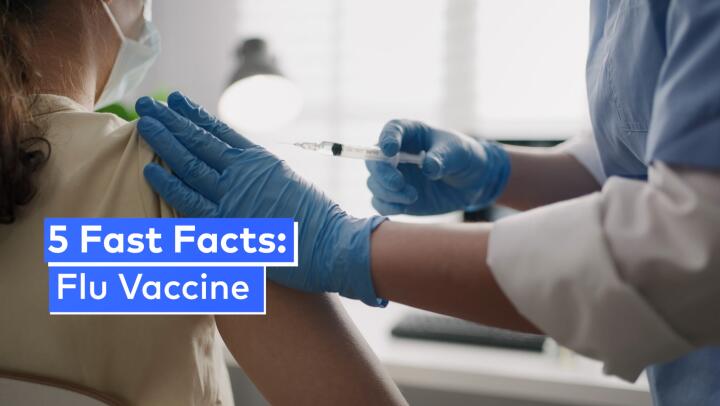
Colds aren’t serious, but they are incredibly common. According to the American Academy of Pediatrics, preschool-aged kids average six to eight colds a year. Given that the average cold lasts about a week, that’s nearly two months of sniffling, sneezing and stuffiness per year, per kid.
You can’t keep your kids from catching colds, but there’s a lot you can do to help them feel better. Here’s a quick rundown of what you need to know to effectively manage your kids’ colds.
What Causes Colds – and What Doesn’t
Colds are caused by viruses. In fact, there are nearly 200 different viruses that are capable of causing a common cold!
Going outside without a coat, or going outside with wet hair does not cause a cold. Although intriguing new research suggests that cold temperatures may make the body more susceptible to the viruses that cause colds. Stress doesn’t directly cause colds either, though stress can depress your immune system, increasing your susceptibility to all kinds of viruses, bacteria and illnesses.
Recognizing and Responding to Cold Symptoms
You’re already familiar with the most common symptoms of a cold: a stuffy or runny nose, sore throat, and cough. Other symptoms include general malaise (that not–feeling-good feeling), a low-grade fever, and loss of appetite. You can help your child feel better with these easy, at-home remedies:
For stuffy noses: Saline nose drops, steamy showers and/or a bulb syringe can be used to relieve nasal congestion, depending on your child’s age. Bulb syringes–those strange-looking plastic devices with a pointed tip and bicycle horn-looking bulb at the end–can be used to remove nasal mucus from the nasal passageways of infants and children too young to blow their noses. Simply compress the bulb of the syringe to expel the air from it; then, while maintaining compression of the bulb gently insert the tip of the syringe into your child’s nostril. Release pressure on the bulb to suck up some mucus. Remove the syringe from the child’s nose and forcefully compress the bulb over a tissue to clear the bulb of mucus. Repeat as necessary (and as tolerated by your child!).
Placing a few drops of saline into your child’s nose can help loosen up mucus, making it easier for her to blow her nose or for you to remove mucus with a bulb syringe. Spending time in or near a steamy shower can also help temporarily relieve nasal congestion.
For coughs: The American Academy of Pediatrics and FDA now say that children under the age of two should not take over-the-counter cough and cold medications due to the risk of life-threatening side effects. Both organizations also recommend against the use of OTC cough and cold products in kids under the age of six, because the available evidence shows that the products don’t really help and may cause serious side effects.
Instead, reach for a natural solution: honey. Research has found that honey reduces cough at least as well as a common cough suppressant, without exposing children to the risks of over-the-counter cough medicines. Plus, honey tastes good! Try half a teaspoon for kids ages two to five years, one teaspoon for kids ages six to 11, and two teaspoons for kids ages 12 and up. Never give honey to an infant younger than 12 months because they are susceptible to microbial spores that occur naturally in honey.
Over-the-counter cough drops and cough suppressants can be used, if needed, in kids over the age of six. The most commonly used cough suppressant is dextromethorphan, often indicated by “DM” on the label. Carefully read the labels of all medications, and double-check dosages, even for older kids.
For sore throats: Drinking lots of liquids can ease the discomfort of a sore throat. Try both cool and hot beverages, including tea and chicken broth. Smoothies, popsicles shakes and ice cream also go down easily and provide some comfort.
Older kids can also suck on a cough drop, throat lozenge or piece of hard candy. Gargling salt water may provide some relief as well.
Over-the-counter pain and fever relievers, such as acetaminophen (Tylenol®) and ibuprofen (Motrin®, Advil®) can be used to relieve sore throat pain too. Be sure to double check the dosage with your child’s healthcare provider, especially if your child is under the age of two, as appropriate doses are based on your child’s weight.
For fevers: No treatment is necessary for a fever, but if a fever is making your child feel miserable, you can use acetaminophen or ibuprofen, as directed by your child’s doctor or pharmacist, to bring down the fever. Tepid baths and cool cloths on the forehead can also help a sick child feel better.
When to Call the Doctor
You can manage most colds at home. However, you should call the doctor if:
Your child is less than three months old. Colds are much more distressing to young babies. Your doctor can assess your child’s condition and help you figure out how to keep your child comfortable.
Your child is having difficulty breathing. Watch for labored breaths, wheezing and a fast respiratory rate.
Your child isn’t drinking enough. Hint: your child’s pee should be light yellow in color.
Symptoms linger longer than 10 days. If your child is still sick, he might have more than a simple cold.
The common cold can cause all kinds of havoc at home. Equipping yourself with information and symptom-relieving strategies in advance can help you (and your children) cope with colds when they occur.














